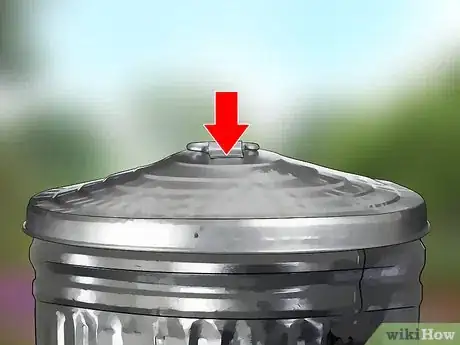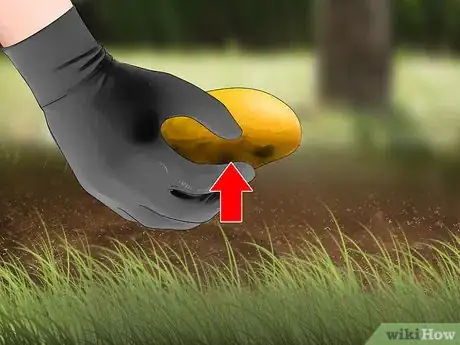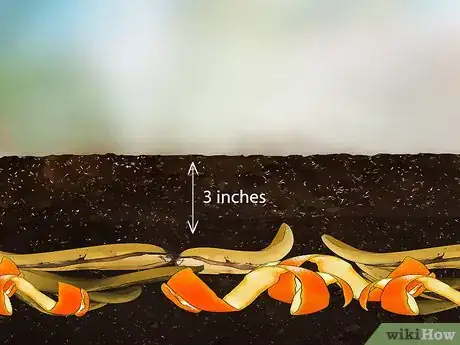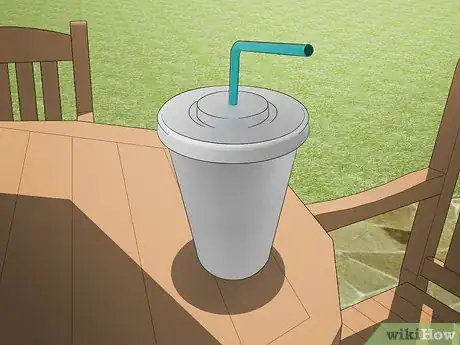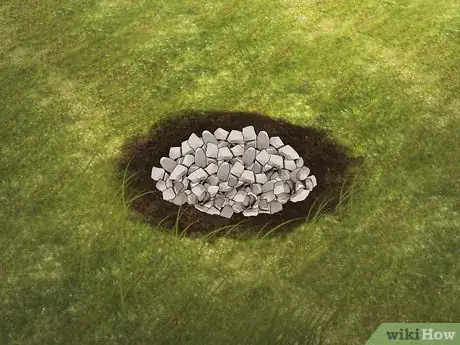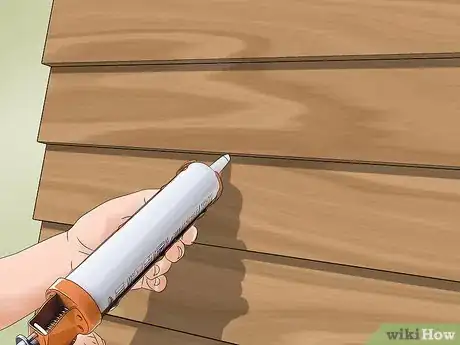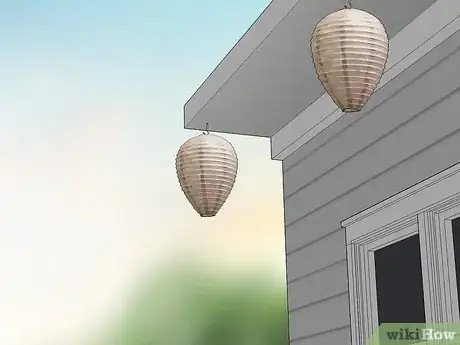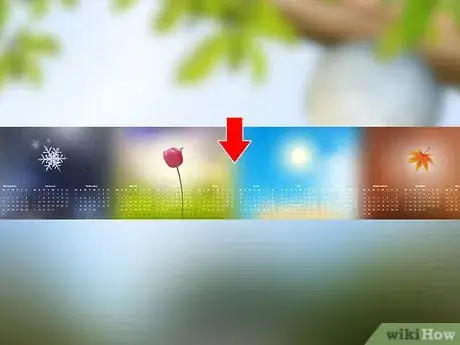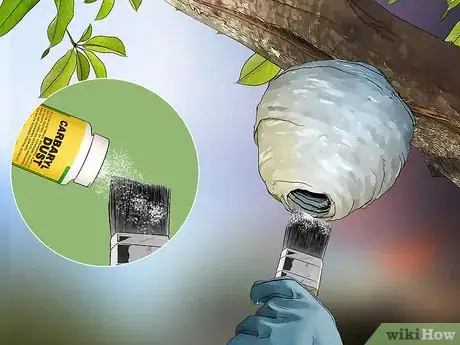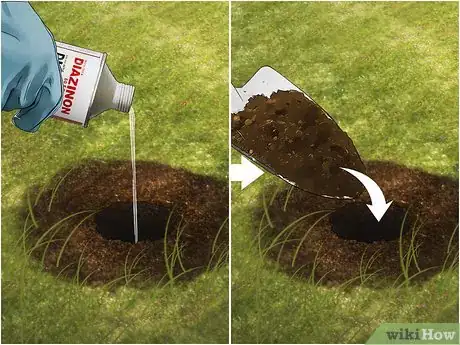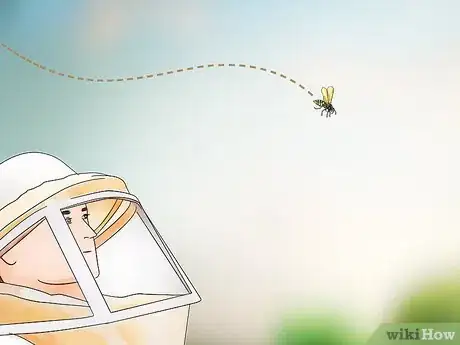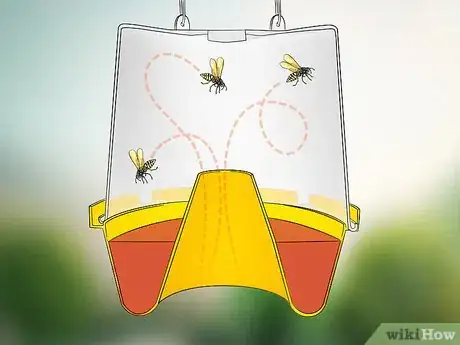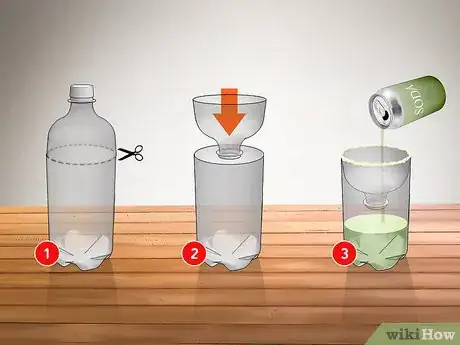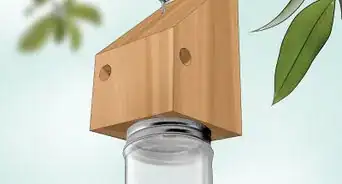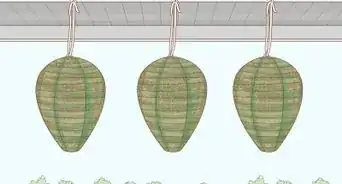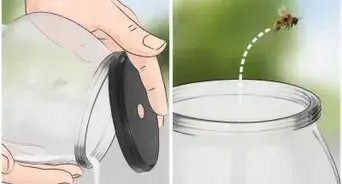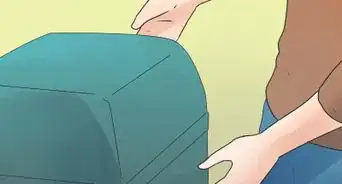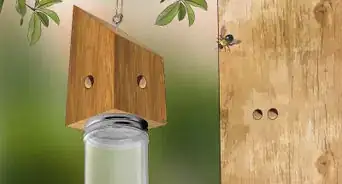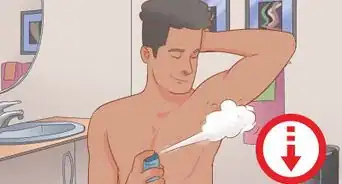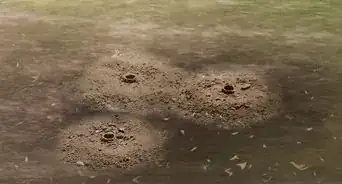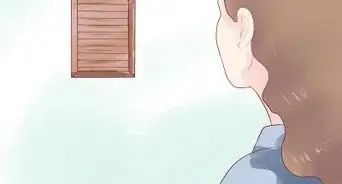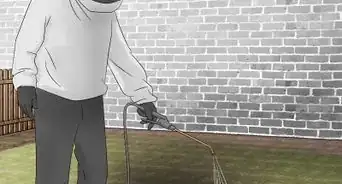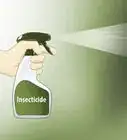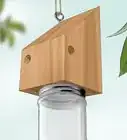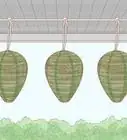This article was co-authored by Scott McCombe. Scott McCombe is the CEO of Summit Environmental Solutions (SES), a family-owned local pest solutions, animal control, and home insulation company based in Northern Virginia. Founded in 1991, SES has an A+ rating with the Better Business Bureau and has been awarded “Top Rated Professional,” and “Elite Service Award" by HomeAdvisor.
There are 9 references cited in this article, which can be found at the bottom of the page.
wikiHow marks an article as reader-approved once it receives enough positive feedback. This article received 40 testimonials and 83% of readers who voted found it helpful, earning it our reader-approved status.
This article has been viewed 964,675 times.
Yellow jacket wasps are flying, stinging insects that can nest above or below ground. You can keep these pests at bay by eliminating possible food sources that may attract them, such as uncovered garbage bins, open sugary beverages, and fallen, overripe fruit in your garden. Do your best to prevent yellow jackets from nesting around your home and kill any active nests you come across with pesticides.
Steps
Reducing Their Access to Food
-
1Store your garbage in sturdy containers with lids that close tightly. Garbage will attract yellow jackets, who are attracted to protein foods and sugar. Make sure that your outdoor garbage containers remain closed at all times. Each container should have a sturdy lid that closes firmly to keep pests out.[1]
- Garbage dumpsters should have heavy, swinging doors that are kept closed at all times.
- Avoid letting your garbage pile up too much in outdoor bins, as you will be unable to close them properly if they are too full. Buy multiple bins if necessary.
-
2Dispose of fallen or overripe fruit under fruit trees. If you have fruit trees in your yard, you will be vulnerable to yellow jackets and other flying insects. Regularly inspect your fruit trees and remove any overripe or rotten fruit. Pick up fallen fruit around the perimeter of your trees and dispose of it immediately.
- Dispose of fruit in a sealed plastic bag to avoid attracting yellow jackets.
Advertisement -
3Compost fruit and vegetable remnants at least 3 inches (7.6 cm) deep. Avoid leaving any pieces of fruits or vegetables on the top of your compost heap, where the juices may attract yellow jackets. Instead, cover them with a few inches of brown compost material to bury them thoroughly.[2] This material may include dry leaves, wood shavings, straw, hay, wood chips, or shredded cardboard.[3]
- To keep yellow jackets and other pests away, it is best to use a compost bin as opposed to an open compost pile.
-
4Drink beverages from cups with lids when you are outdoors. Yellow jackets are attracted to many beverages, particularly sugary drinks like soda or juice. To prevent one of these insects from entering your drink container, opt for a cup with a lid over cans or open glasses. Dispose of your drink container right away after finishing your beverage to keep yellow jackets at bay.
- Drinking from a can that a yellow jacket has entered will likely result in being stung on the lips.
Keeping Them from Building Nests
-
1Fill rodent burrows in your yard to stop yellow jackets from nesting there. Unlike other flying insects, yellow jackets will sometimes nest underground. To prevent his, scan your yard for any holes in the ground dug by rodents or pets. Fill the burrows in with soil and pack them firmly to ensure that they are properly sealed off.[4]
- Underground yellow jacket nests can be dangerous as simple tasks like using your lawnmower could trigger an attack.
-
2Seal holes that lead into your home with caulk to keep wasps out.[5] Inspect the outside of your home for any signs of wear and tear, as wasps and other insects can use small openings to gain access and build a nest inside. Use a caulking gun to fill gaps, holes, or cracks around the perimeter.[6] Position the gun at a 45-degree angle and squeeze the trigger to distribute a thick stream of caulking into the spots you are filling.[7]
- Acrylic caulking is suitable for holes smaller than 0.25 inches (0.64 cm), while holes larger than 0.25 inches (0.64 cm) should be filled with polyurethane caulking.[8]
- Infestations of yellow jackets into your home will most likely require the expertise of a professional exterminator.
-
3Hang up a fake wasp nest to warn away yellow jackets. Wasps are territorial and will not make a nest within a few hundred feet of where one is already situated. Purchase a fake nest online or in a local hardware store. Hang the nest in a visible spot near your home to keep yellow jackets and other wasps at bay.[9]
- Purchase a fake nest that is weatherproof and durable.
Killing Yellow Jackets
-
1Find and destroy small nests in the late spring and early summer. Yellow jacket colonies are started in the late spring or early summer when the queen sets up small nests to produce a new population of workers. You can prevent this development by looking for small nests that may be hanging under awnings, railings, doorways, or nooks outside your home. Knock down the nests with gloved hands or a large stick and promptly step on them to kill the egg cells inside.[10]
- The queen is usually the only mobile resident of her nests in the late spring and early summer.
- Once nests are larger and worker wasps start emerging from them, it will be too dangerous to destroy them this way.
- Yellow jacket nests are round, paper-like, and have a small entranceway at the bottom.
-
2Coat the openings of above-ground nests with carbaryl pesticide at dusk. Approach yellow jacket nests at dusk, when the wasps are no longer active. Sprinkle carbaryl, a powder pesticide, onto a cloth or old paintbrush. Gently brush the pesticide around the entrance hole on the bottom of the nest, being careful not to clog it.
- Avoid shaking the nest, as it may prompt the wasps to attack. They will still swarm to protect their nest even when it's dark outside.[11]
- The yellow jackets will collect the pesticide on their bodies as they leave and enter the nest, and then ingest it when they groom themselves.
- It should take about 5 days for the entire nest to be killed.
- To protect yourself when approaching wasp nests, dress protectively in a high-necked top with long sleeves, gloves, and a head net, hat, or a headscarf.[12]
- Purchase carbaryl online or in hardware stores.
-
3Pour diazinon into underground nests and cover them with soil. At dusk, approach underground yellow jacket nests in your garden. Carefully pour liquid pesticide down the holes.[13] Immediately toss a full shovel of soil on top of the hole to prevent the wasps from emerging.
- You can find diazinon in hardware stores as well as online.
-
4Don't squish yellow jackets as it will prompt an attack from other wasps. Avoid harming yellow jackets that cross your path. This causes a pheromone to be released which attracts other wasps, signaling them to attack. Instead, avoid them or sit still as they approach you and wait for them to leave.
-
5Use a non-toxic wasp trap to kill stray yellow jackets without chemicals. Fill the reservoir of your wasp traps with a liquid attractant such as sugar water or soda. Exhausted yellow jackets will approach the traps while they are out foraging and fall into them out of exhaustion. Clean and replace the traps every few days to dispose of dead insects.[14]
- Purchase non-toxic wasp traps in garden centers, hardware stores, or online.
- Use at least 4 traps to deal with a yellow jacket colony.
- Bait traps attract yellow jackets, so they should be placed at least 20 feet (6.1 m) away from areas you spend a lot of time in.
-
6Build a trap of your own using a large soda bottle for a homemade option. Remove the plastic cap from a large plastic soda bottle and cut off the tapered top part of the bottle. Turn the top over and insert it into the open bottle to face the bottom. Fill the bottle about half full with soda, sugar water, or other appealing liquids.[15]
- Wasps will fly in, have difficulty getting out, then fall into the liquid and drown.
- Empty and refill the soda bottle frequently to remove dead insects.
Expert Q&A
Did you know you can get expert answers for this article?
Unlock expert answers by supporting wikiHow
-
QuestionWhat can I do to keep yellow jackets and wasps away?
 Scott McCombeScott McCombe is the CEO of Summit Environmental Solutions (SES), a family-owned local pest solutions, animal control, and home insulation company based in Northern Virginia. Founded in 1991, SES has an A+ rating with the Better Business Bureau and has been awarded “Top Rated Professional,” and “Elite Service Award" by HomeAdvisor.
Scott McCombeScott McCombe is the CEO of Summit Environmental Solutions (SES), a family-owned local pest solutions, animal control, and home insulation company based in Northern Virginia. Founded in 1991, SES has an A+ rating with the Better Business Bureau and has been awarded “Top Rated Professional,” and “Elite Service Award" by HomeAdvisor.
Pest Control Specialist
Warnings
- Avoid wearing bright colors in areas populated by yellow jackets, which will attract them.⧼thumbs_response⧽
- Hummingbird feeders, which are essentially sugar-water dispensers, should be taken down if you are dealing with a yellow jacket problem.⧼thumbs_response⧽
- Don't wear overly aromatic perfumes, hair products, or deodorants in areas with yellow jackets, as wasps are attracted to sweet smells.⧼thumbs_response⧽
- Yellow jackets may actually be attracted to some insect repellents that ward off other bugs. [16]⧼thumbs_response⧽
References
- ↑ https://blog.epa.gov/blog/2016/05/prevent-yellow-jackets-before-they-cause-problems-at-your-school/
- ↑ https://www.goodhousekeeping.com/home/a20707173/wasp-proof-your-yard/
- ↑ https://www.bbg.org/news/gathering_browns_for_your_compost_pile
- ↑ https://www.gardeners.com/how-to/yellow-jackets/7700.html
- ↑ Scott McCombe. Pest Control Specialist. Expert Interview. 19 November 2019.
- ↑ https://www.sites.ext.vt.edu/schoolipm/ipmtechniques/documents/wasps.pdf
- ↑ https://www.bhg.com/home-improvement/remodeling/how-to-use-a-caulking-gun/
- ↑ https://www.familyhandyman.com/masonry/concrete-repair/make-exterior-caulk-last-longer/view-all/
- ↑ https://www.goodhousekeeping.com/home/a20707173/wasp-proof-your-yard/
- ↑ https://www.goodhousekeeping.com/home/a20707173/wasp-proof-your-yard/
- ↑ Scott McCombe. Pest Control Specialist. Expert Interview. 19 November 2019.
- ↑ https://www.goodhousekeeping.com/home/a20707173/wasp-proof-your-yard/
- ↑ Scott McCombe. Pest Control Specialist. Expert Interview. 19 November 2019.
- ↑ https://www.clemson.edu/extension/beekeepers/fact-sheets-publications/yellow-jackets.html
- ↑ https://www.goodhousekeeping.com/home/a20707173/wasp-proof-your-yard/
- ↑ https://www.goodhousekeeping.com/home/a20707173/wasp-proof-your-yard/
About This Article
To keep yellow jacket wasps away, hang up a crumpled brown paper bag in your yard so the wasps think there's already a nest there. You can also try putting slices of cucumbers around your yard, which wasps don't like. Try not to leave any sugar or food outside or you could attract more wasps. If wasps do decide to show up, you can get rid of them by spraying them with soapy water. To learn how to make a yellow jacket wasp trap, scroll down!
